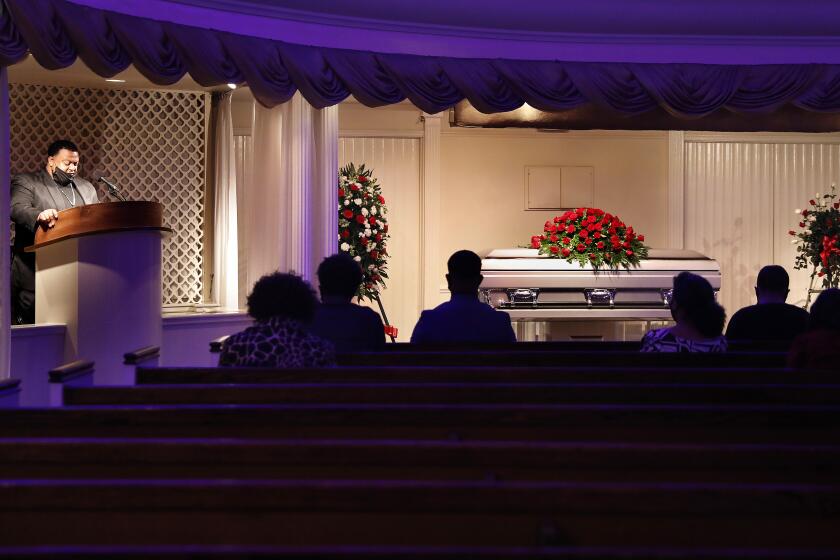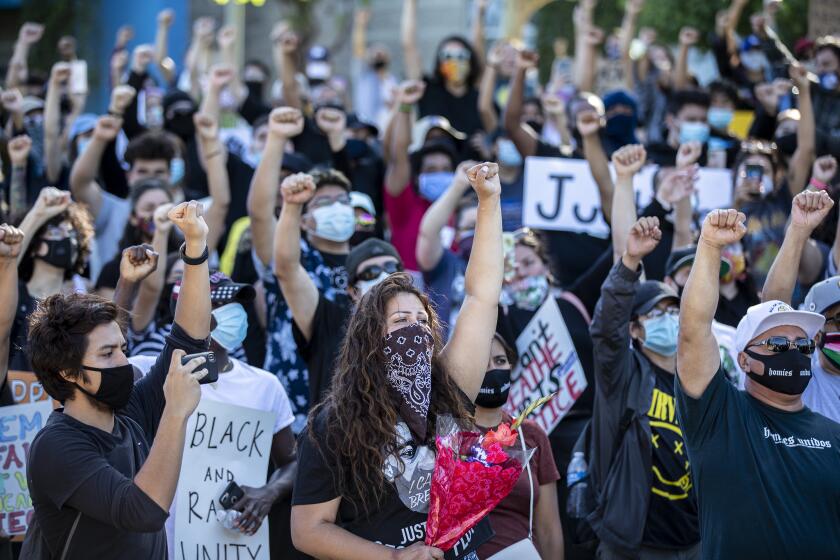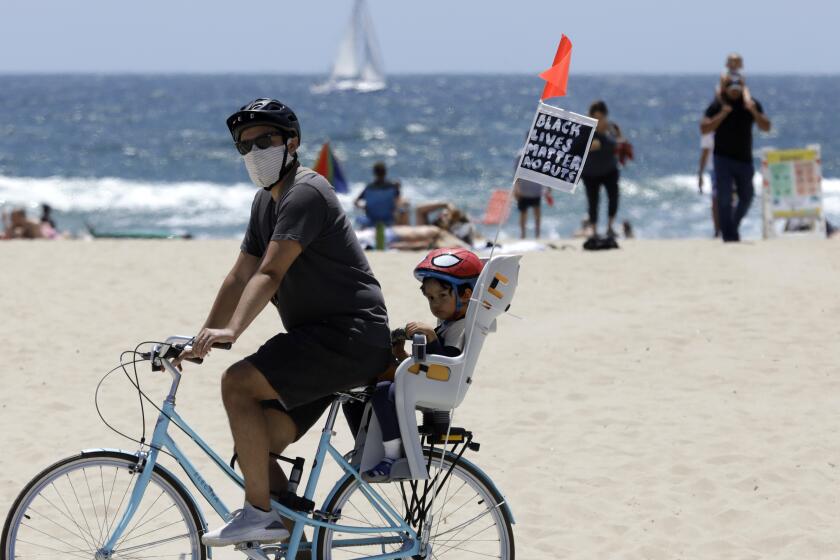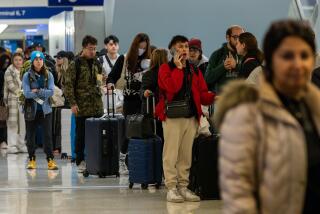California coronavirus cases remain on upward trajectory
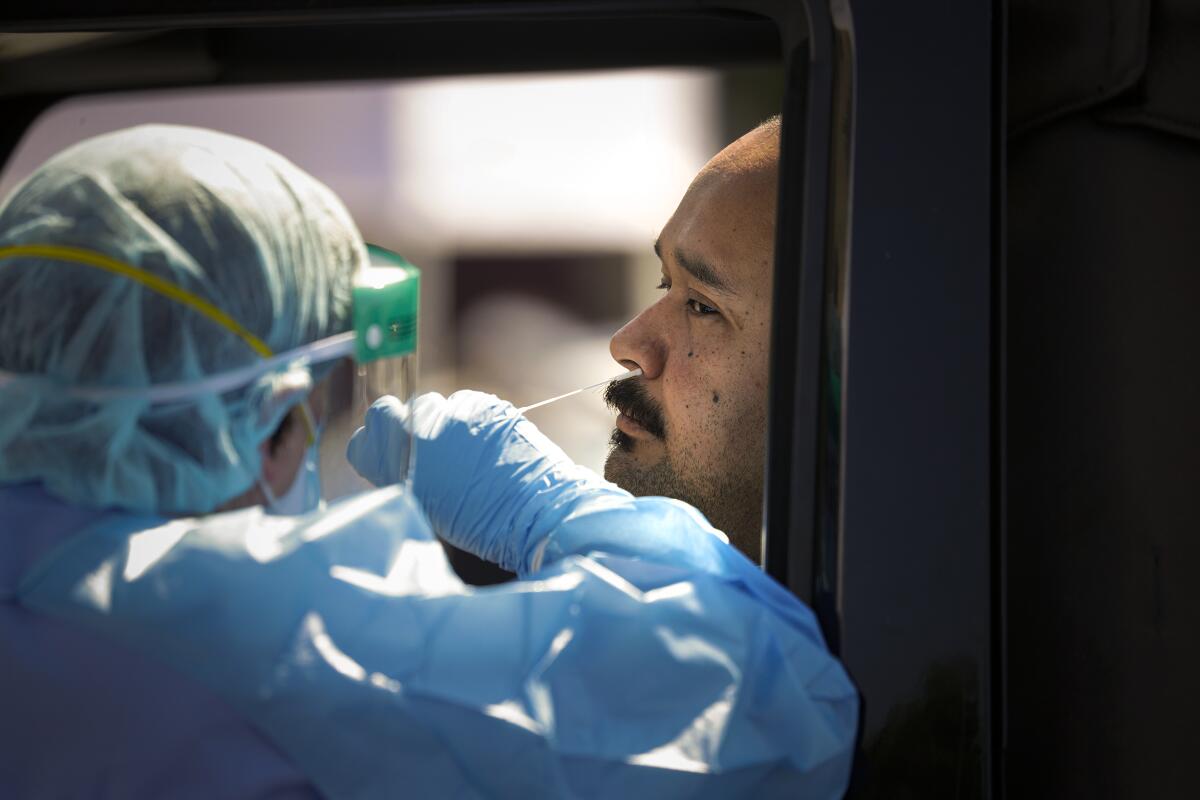
- Share via
The number of coronavirus infections throughout California continues to rise steadily as counties further lift stay-at-home restrictions amid increasing efforts to restore the battered economy.
On Monday, health officials reported nearly 3,100 cases, bringing the total to more than 134,000 infections in the state.
California surpassed 100,000 cases a little less than two weeks ago and has reported at least 2,000 infections every day since.
In Sacramento County, officials have seen a recent surge in hospitalizations linked to gatherings, including birthday parties and one funeral, over the past two weeks.
On Friday, the county reported that 17 people were hospitalized, including nine in intensive care. By Tuesday, that number had increased to 33 hospitalized patients, 14 of whom were in intensive care.
Dr. Olivia Kasirye, the county’s health officer, said that most of the 33 hospitalized individuals were connected to the same household and attended the same events. Those hospitalized have underlying health conditions, including diabetes, high blood pressure, kidney and heart disease.
Blacks, Latinos and Pacific Islanders are twice as likely to die as whites in Los Angeles County from the coronavirus, according to new data.
Beyond assembly for religious worship and political protests, gatherings are not yet allowed under state or county orders. But Kasirye thinks that many may believe it’s safe to reunite, despite the ongoing prohibition.
Residents heeded warnings to self-isolate when stay-at-home orders were first implemented, Kasirye said. “Now, there’s probably a sense that we’re out of the woods, and many who have not seen relatives and friends for a long time have started venturing out.”
The county has reported more than 1,600 infections and 61 deaths. Kasirye said that about 50% of the infections were among individuals ages 18 to 49.
Hospital bed capacity is one of the key metrics counties are tracking to ensure they can continue to lift restrictions. Sacramento County still has a large number of beds available, but officials are continuing to check with hospitals on a regular basis to make sure they can manage any surge in hospitalized patients, Kasirye said.
State officials will work with Sacramento County and other areas to address the uptick in coronavirus cases.
“The state will work closely with local health departments to identify action steps and timelines for addressing issues that impact indicators of concern,” officials wrote in a statement. Other counties of focus include San Bernardino, Imperial, Santa Clara, Tulare, San Joaquin, Kings, Fresno and Los Angeles.
The coronavirus arrived in Northern California not only from people who brought it in from other states but from international travelers from many places.
The bulk of the state’s infections and deaths are still occurring in Los Angeles County. On Tuesday, officials announced 56 new deaths and 1,225 new cases, bringing the number of infections to more than 65,800 and the death toll to to 2,707. On Saturday and Sunday, officials announced 81 deaths — the highest number of deaths reported over a weekend in more than a month.
Officials have said the increase in the number of cases partly stems from an increase in testing. But although testing remains the biggest weapon in the fight against the disease —absent a vaccine or other medical therapies — results are not always accurate.
Los Angeles County announced it was shifting testing methods at drive-through sites to nasal swabs over oral swabs. On Monday, Dr. Christina Ghaly, director of health services for L.A. County, said officials thought the specimen collection by nasal swabs was of better quality than specimens collected via mouth and would likely lead to fewer false negatives.
“The likelihood of getting the correct test result is higher than it is with the oral swabs,” Ghaly said.
The incubation period of the virus can take up to 14 days, so it’s too soon to tell if there’s been a surge in cases connected to the protests against police brutality and inequality in the aftermath of the death of George Floyd.
Health officials want you to get tested for the coronavirus if you’ve been to a protest or any large gathering where people haven’t worn masks.
Public Health Director Barbara Ferrer on Monday encouraged anyone who had been at a protest or large gathering to get tested. But she warned that when a test was done too early after possible exposure to the coronavirus, it could result in a false negative as there might not yet be enough of the virus to detect.
It’s unclear how many people have falsely tested negative for the virus. So far, more than 720,000 of the county’s 10 million residents have been tested for COVID-19, the disease caused by the coronavirus. Of those, 8% have tested positive, health officials say.
If a person doesn’t have symptoms, Ferrer said, it doesn’t necessarily mean the individual is not a carrier.
“I do want to say that there is, unequivocally, asymptomatic spread. So I don’t want anyone to get confused that people who are asymptomatic may not be capable of spreading. They are in fact capable of spreading. And we all need to keep that in mind. The question is: How much are they spreading?”
L.A. County health officials are detecting an uptick in coronavirus transmission and fear the number of COVID-19 hospital patients may increase.
In fact, health officials in L.A. County are detecting an uptick in disease transmission.
After the “effective transmission rate” of the virus fell from its original 3 to 3½ — meaning one infected person on average transmitted the virus to an average of three or 3½ other people — the rate dipped to its lowest point in mid-May to just under 1.
But the transmission rate has begun to climb again, causing further worry among health officials about the potential for a second wave. They had warned of a possible surge in cases after many stay-at home restrictions were eased in advance of the Memorial Day weekend.
Previously asked in May what would happen if a surge in cases were to occur in L.A. County after stay-at-home orders were lifted, Ferrer said that restrictions would not be reimplemented. Instead, the state would help the county address specific needs as they arose.
More to Read
Sign up for Essential California
The most important California stories and recommendations in your inbox every morning.
You may occasionally receive promotional content from the Los Angeles Times.
